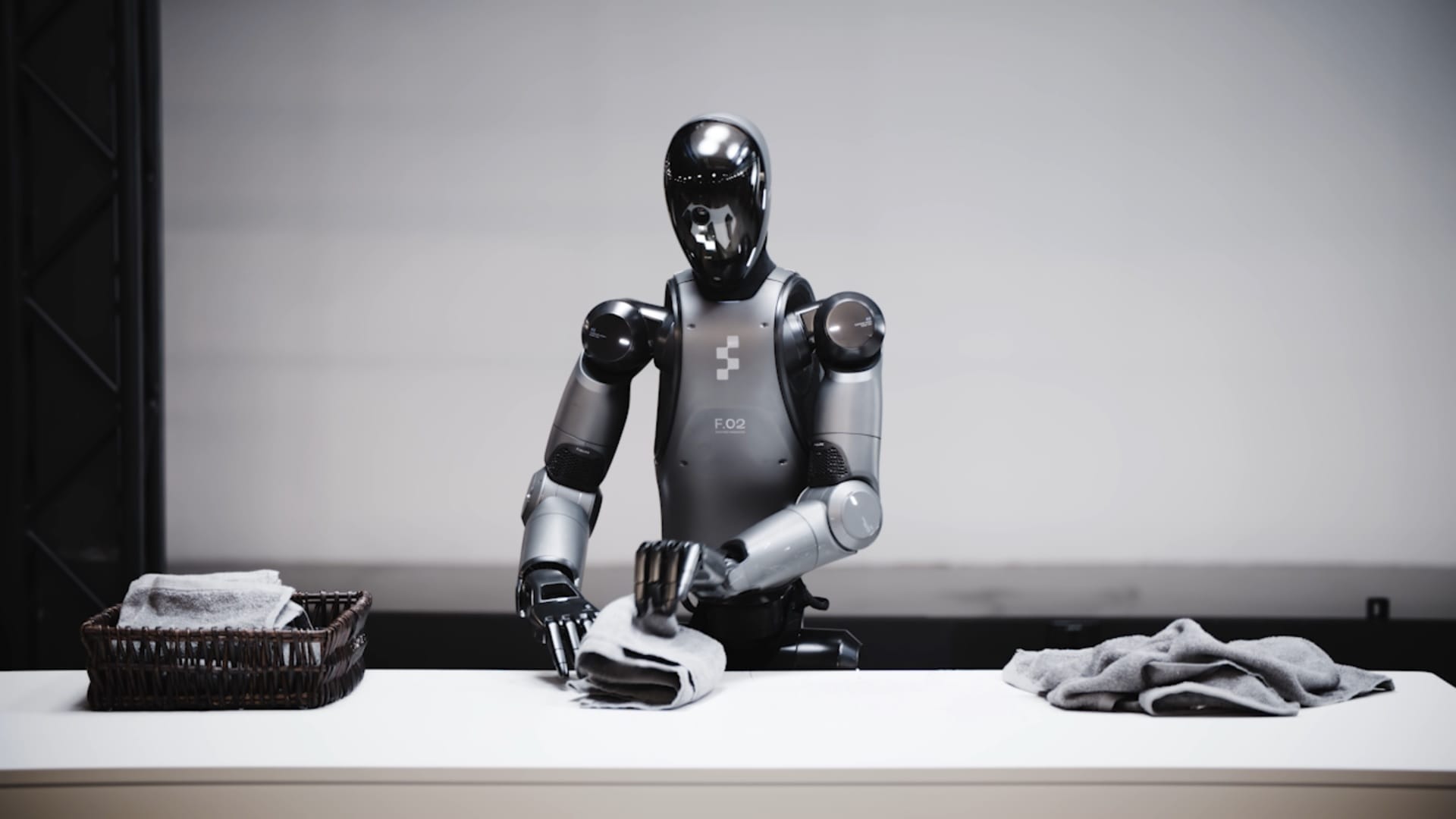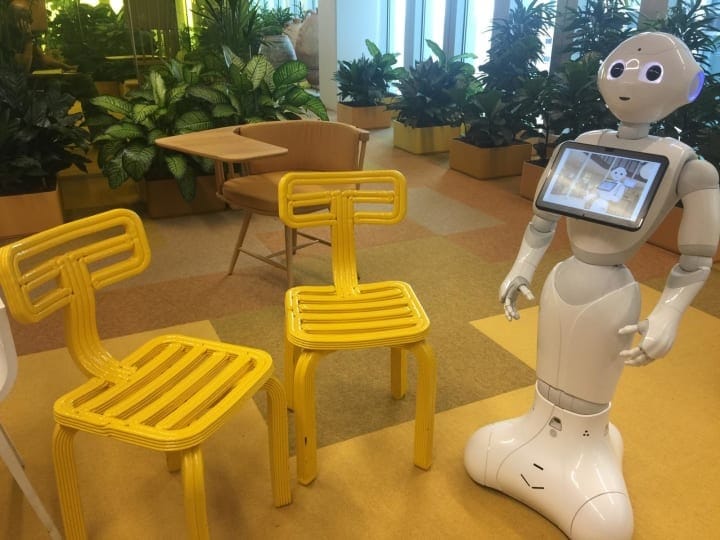
Next-gen humanoid robots will take over your household chores
Robots have become capable of tasks like loading the dishwasher and folding laundry.
The word “robot,” which we use in both science fiction and real life when referring to autonomous machines capable of performing jobs to help humans, is not a recent invention. It was January 2nd, 1921, in then Czechoslovakia (today, the Czech Republic), when the word “robot” was introduced and used in public for the first time.
I lived in Prague for three years and I always remember how proud the Czechs were about the word “robot” being a Czech invention. It was their favorite ice-breaker every time! It was also a great opportunity to talk about one of their beloved and most influential writers of the 20th century: Karel Čapek.
In 1920, Czech writer, playwright, and journalist Karel Čapek wrote his speculative science fiction play R.U.R., which stands for Rossumovi Univerzalni Roboti (or, in English, Rossum’s Universal Robots). The term “roboti” was invented by Čapek and derived from the Czech word “robota,” which means forced labor. The word “robot” was added to the English language later, in 1923.
Fast-forward about half a century. In the late 1960s, the Artificial Intelligence Center at Stanford Research Institute (now SRI International) developed the first mobile robot equipped with artificial intelligence. They called it Shakey. Shakey was capable of reasoning about its own actions, combining perception, planning, and problem solving, navigating and interacting with its environment autonomously.
Since then, artificial intelligence has gained significant attention in the field of robotics as the way to build an artificial neural network that gives human-like intelligence to robots and humanoids.
Semi-humanoid robots have been around for at least a decade performing simple tasks, usually in the hospitality industry and customer service.
In 2017, I visited the city of Rotterdam in the Netherlands. I was there for a meeting with Pepper, a semi-humanoid robot developed by Softbank Robotics. Pepper had the ability to identify visitors using facial recognition, to detect emotion by analyzing facial expressions and voice tones, to have autonomous conversations with humans, and to move around its environment on wheels.
Pepper was working in customer service. It was also in charge of presenting an introductory program to new entry employees. It was the start of an era of collaboration between robots and humans.

Rotterdam, the second largest city in the Netherlands, was preparing to become a smart city that will one day be transited by self-driving cars, overflown by unmanned flying vehicles, and inhabited by humans and the new AI species. Human-robot interaction will be at the center of it all.
New generation of humanoid robots loads the dishwasher, stores groceries, and folds laundry
Now, less than a decade later, thanks to advances in robotics, sensors, and AI, a new generation of general-purpose humanoid robots is ready to become a part of daily life. Figure AI, a robotics startup based in San Jose, California, is preparing to scale humanoid robots into homes and commercial operations.
According to The Robot Report, this month Figure AI surpassed $1 billion in committed capital, bringing its valuation to $39 billion. The company also won a 2024 RBR50 Robotics Innovation Award for the fast pace of development of its humanoid robots.
The startup was founded in 2022 and counts the investment support of NVIDIA, Parkway Venture Capital, Brookfield Asset Management, Qualcomm Ventures, LG Technology Ventures, Salesforce, Intel Capital, Macquarie Capital, Align Ventures, Tamarack Global, and T-Mobile Ventures. Figure aspires to be a market leader and first-of-its-kind AI robotics company for general-purpose, 100% autonomous humanoids.
Figure AI plans on shipping 100,000 humanoid robots over the next four years. These humanoids are designed to assist with household and commercial tasks.
"The team’s in place, the robots are built, and the path ahead is clear." —Brett Adcock, CEO of Figure
Figure, the humanoid robot developed by Figure AI, uses Helix AI, a generalist Vision-Language-Action (VLA) model that unifies perception, language understanding, and learned control to overcome multiple longstanding challenges previously encountered in robotics.
Collaborative grocery storage
In the video below, two Figures are asked to perform a task classifying objects they have never seen before. Using Helix AI, the two humanoids must figure out where to place the items according to their category. To complete the task, they have to work as a team, communicating and coordinating with each other. Through their unique set of neural network weights, they learn behaviors such as picking and placing items, using drawers and refrigerators, and cross-robot interaction with each other—without any task-specific fine-tuning.
Figure 02 loads the dishwasher
What is fascinating about Helix is that it is the first Vision-Language-Action model that directly controls an entire humanoid upper body from natural language. Helix is different from previous robot systems because it is capable of long-horizon, collaborative, dexterous manipulation on the fly, without the need for extensive manual programming. Scaling humanoid robot behavior is going to happen fast. The demonstrations in the videos above are just the beginning.
Robotics has come a long way in a short time since my conversation with Pepper. In less than five years, humanoid robots could become part of the average household. I can already envision Figure humanoids doing the grocery shopping, cooking, loading the dishwasher or doing the dishes, and cleaning up after themselves.
If this vision comes to pass, what will be left for humans to do? Perhaps now it’s a good time to remember that the central idea of Karel Čapek’s R.U.R. is the destruction of humankind. In the play, technology is too advanced and has gotten out of control. With a purpose of eliminating the need to work, people create artificial servant-robots who later revolt and wipe out the entire human race. Eventually, a couple of these artificial robots who initially are unable to have any feelings, find love for one another and, with a blessing from the old inventor, become the new Adam and Eve.
